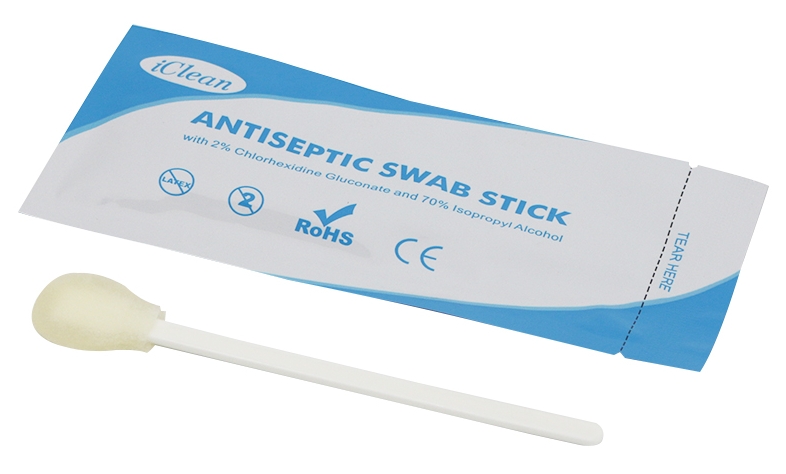What is chlorhexidine and what does chlorhexidine do?
Chlorhexidine is a chemical compound commonly used as an antiseptic and disinfectant in various healthcare settings. Here’s a breakdown of what chlorhexidine is and what it does:
- Chemical Composition: Chlorhexidine is a cationic bisbiguanide compound, meaning it contains two biguanide groups and has a positive charge. It is often found in the form of chlorhexidine gluconate or chlorhexidine digluconate.
- Antiseptic Properties: Chlorhexidine has broad-spectrum antimicrobial properties, meaning it is effective against a wide range of microorganisms, including bacteria, fungi, and some viruses. It works by disrupting the cell membranes of these microorganisms, leading to their destruction or inhibition of growth.
- Uses:
- Skin Antisepsis: Chlorhexidine is commonly used as a skin disinfectant before surgical procedures or invasive medical interventions to reduce the risk of surgical site infections.
- Hand Hygiene: It is also found in some hand hygiene products, such as hand sanitizers and surgical scrubs, to help prevent the transmission of infectious agents.
- Oral Care: Chlorhexidine mouthwash or oral rinse is used for oral hygiene to reduce plaque buildup, gingivitis, and periodontal disease.
- Wound Care: In some cases, chlorhexidine solutions are used for wound irrigation and wound cleansing to prevent infection and promote healing.
- Catheter Care: Chlorhexidine solutions or impregnated catheters are used to prevent catheter-related bloodstream infections in patients with indwelling urinary or central venous catheters.
- Effectiveness: Chlorhexidine is known for its persistent antimicrobial activity, meaning it continues to work for an extended period after application. This property makes it particularly useful in settings where long-lasting protection against microbial contamination is desired.
- Safety Precautions: While chlorhexidine is generally safe for use, it can cause skin irritation or allergic reactions in some individuals, especially with prolonged or repeated exposure. It should be used with caution in patients with known sensitivities to chlorhexidine or its components.
Overall, chlorhexidine is a valuable antiseptic and disinfectant agent used extensively in healthcare to prevent infections and promote patient safety. Its effectiveness, broad spectrum of activity, and persistence make it a cornerstone in infection control practices.

What are the benefits of chlorhexidine disinfection?
Chlorhexidine disinfection offers several benefits, making it a widely used antiseptic and disinfectant in various healthcare settings. Here are some of the key advantages:
- Broad-Spectrum Activity: Chlorhexidine has broad-spectrum antimicrobial properties, meaning it is effective against a wide range of microorganisms, including bacteria, fungi, and some viruses. This makes it versatile for use in different healthcare applications, from skin antisepsis to wound care.
- Persistent Action: Chlorhexidine provides persistent antimicrobial activity, meaning it continues to work for an extended period after application. This property helps in maintaining a lower microbial load on surfaces or skin, reducing the risk of infection transmission.
- Reduction of Healthcare-Associated Infections (HAIs): Proper use of chlorhexidine for skin antisepsis before surgical procedures, hand hygiene, catheter care, and wound care can significantly reduce the risk of healthcare-associated infections (HAIs). By killing or inhibiting the growth of pathogens, chlorhexidine helps prevent surgical site infections, catheter-related bloodstream infections, and other nosocomial infections.
- Effectiveness in Various Applications: Chlorhexidine is effective in different healthcare applications, including skin antisepsis, hand hygiene, oral care, wound care, and catheter care. Its versatility makes it a valuable tool in infection prevention and control efforts across different healthcare settings.
- Ease of Use: Chlorhexidine products are available in various formulations, such as solutions, gels, foams, wipes, and impregnated dressings, making them easy to use and apply in different clinical scenarios. This convenience promotes compliance with infection control protocols among healthcare workers.
- Minimal Development of Resistance: Chlorhexidine has been shown to have a low propensity for inducing microbial resistance compared to some other antiseptics and disinfectants. This is advantageous as it helps maintain the effectiveness of chlorhexidine over time, even with repeated use.
- Safety Profile: When used as directed, chlorhexidine is generally safe for topical application on skin and mucous membranes. It has a well-established safety profile, with low systemic absorption and minimal risk of toxicity when used at recommended concentrations.
- Long Shelf Life: Chlorhexidine solutions and products typically have a long shelf life when stored properly, making them suitable for stockpiling and ensuring availability when needed.
Overall, chlorhexidine disinfection offers significant benefits in preventing infections, reducing the transmission of pathogens, and promoting patient safety in healthcare settings. Its effectiveness, broad spectrum of activity, persistent action, and safety profile make it a cornerstone in infection control practices worldwide.
 A professional supplier of swabs
A professional supplier of swabs
